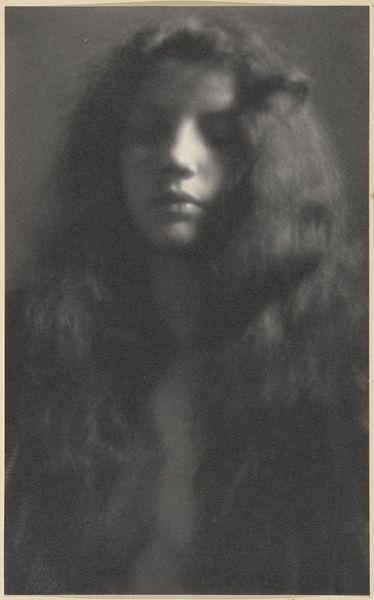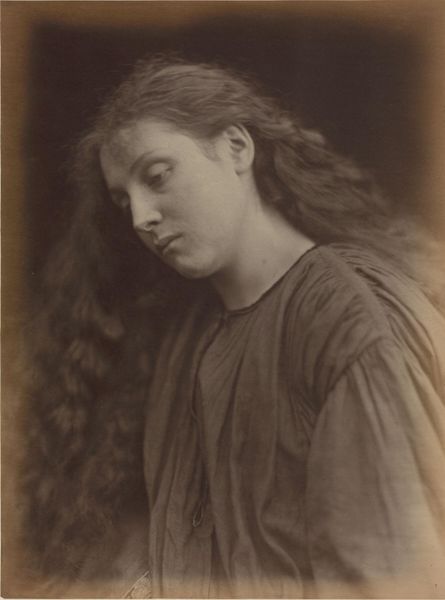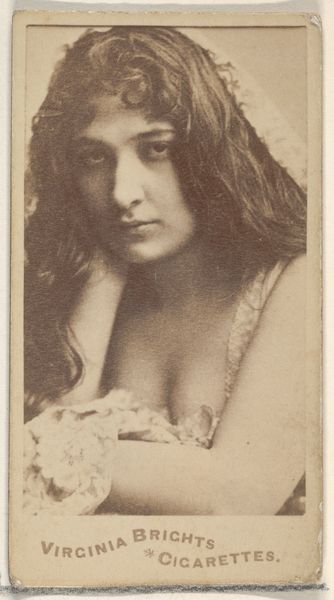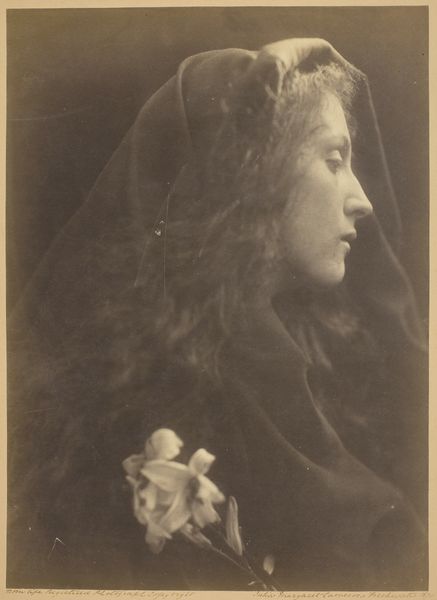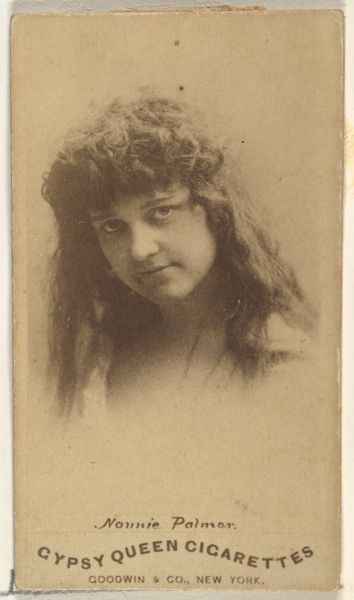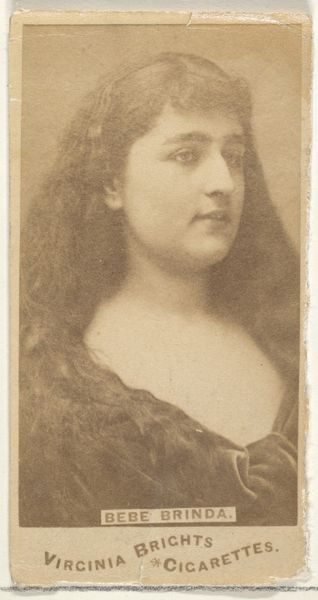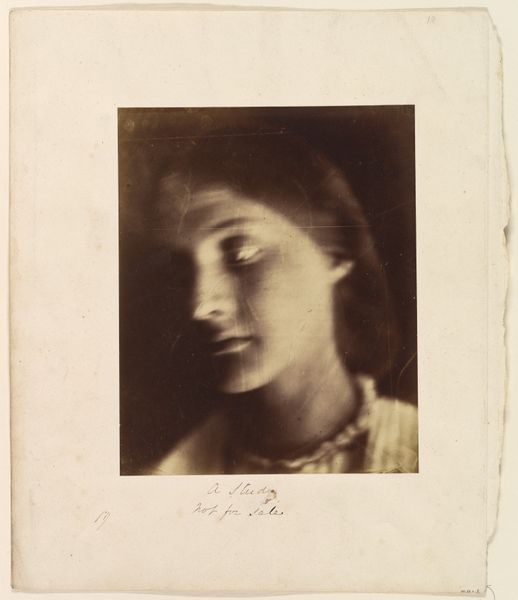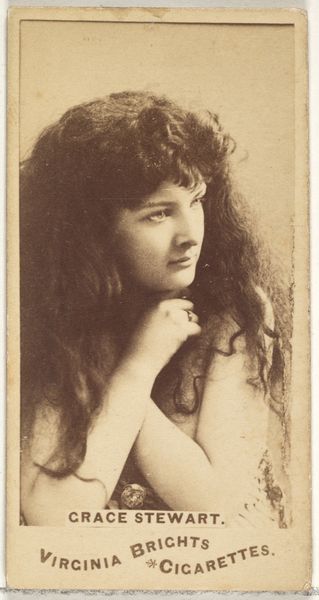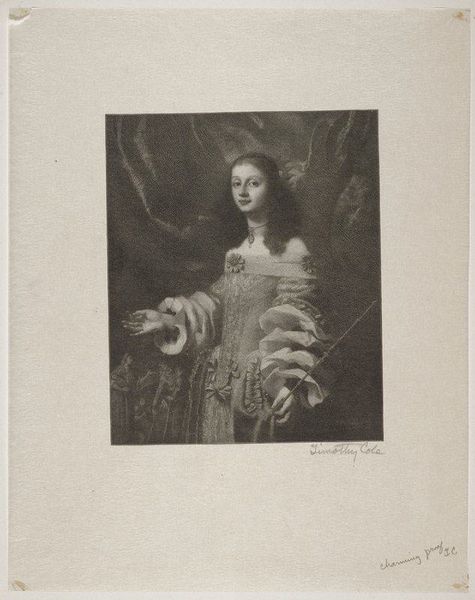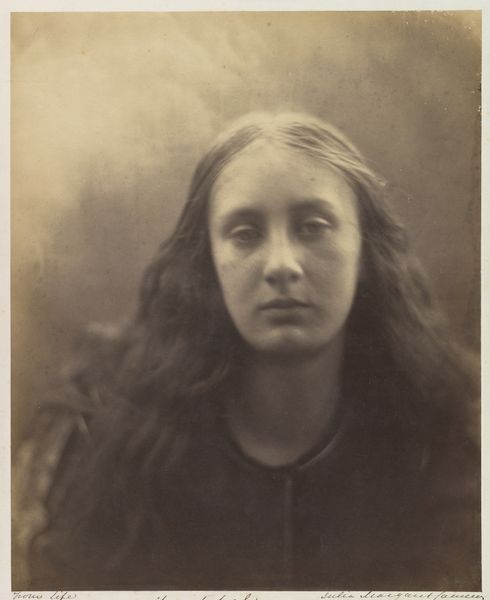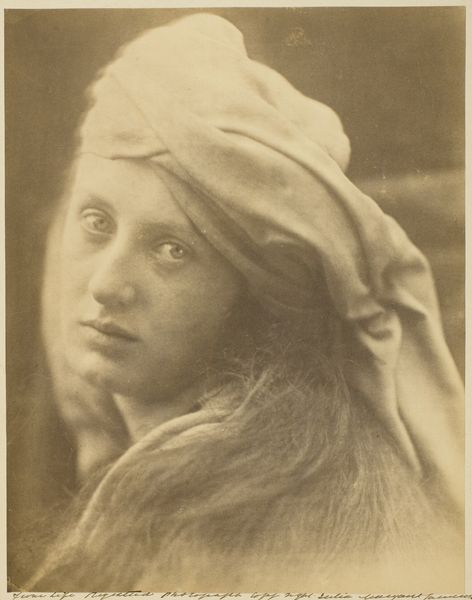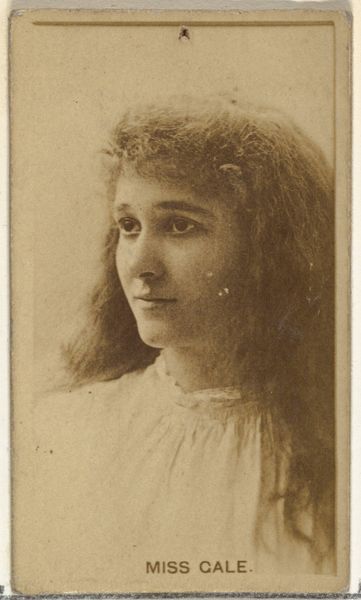
Dimensions: 8 7/16 x 7 in. (21.43 x 17.78 cm) (plate)11 15/16 x 8 15/16 in. (30.32 x 22.7 cm) (sheet)
Copyright: No Copyright - United States
Editor: "Penserosa," created in 1916 by Timothy Cole, a wood-engraving print. It feels like a study in tonal values, almost monochromatic, soft. How do you see the relationship between light and shadow functioning in this portrait? Curator: I see the modulation of tone, achieved through meticulous engraving, as being fundamental. Observe how Cole manipulates the density of lines to create a chiaroscuro effect. It models the face, gives a subtle but deliberate shape to her features, even while limiting contrast and maintaining this soft tonality. Notice the distribution of weight between light and dark regions; it creates balance within the defined borders. What does this distribution evoke? Editor: Perhaps a sense of introspection? The darker areas recede, and the brighter tones bring her face forward, concentrating on her inward gaze. Curator: Precisely. And how does the medium itself—wood-engraving—contribute to this effect? Editor: The texture seems integral. The close, fine lines create a kind of optical vibration. They aren't mimicking brushstrokes, but their visual effect, the way they reflect light, creates an alternative form of subtlety. It avoids hard outlines in favor of smooth gradiations of tone. Curator: A key insight. And consider the title: "Penserosa" invites us to contemplate thought itself. The print thus acts as a structured framework for meditative reflection, achieved through carefully managed visual elements. I see a relationship with structuralism and ideas around the poetics of space. The lines work almost like the structural frame of poetry: not only do they denote meaning, they produce their own rhythm. Editor: That's fascinating, I never considered that structural comparison. Thinking about the visual vocabulary beyond just representation offers a completely different level of depth to appreciating this piece. Thank you for your insight. Curator: You're welcome, and thank you. The piece and the analysis prompt a re-evaluation of portraiture, where process can speak as profoundly as representation.
Comments
No comments
Be the first to comment and join the conversation on the ultimate creative platform.
